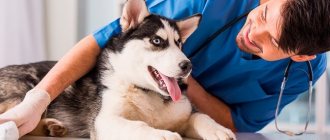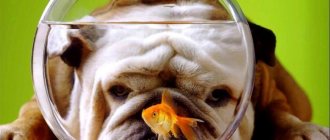Cats have a sexual cycle, which includes a period of estrus. At the same time, the animal experiences hormonal changes, due to which a change in behavior occurs - the pet becomes aggressive, restless and excitable, in addition, external signs of preparation for fertilization appear - secretion leaking out of the loop, swelling and redness of the external genitalia. If you do not plan to breed the animal, you can resort to sterilization, but not during estrus, but in the middle of the cycle. Sterilization during estrus is not recommended by experts.
Reasons for sterilization and appropriate age
Full puberty is achieved around the end of the first year of life. It is recommended to sterilize a cat before the first heat, at the age of 7-8 months and up to a year. Sometimes it is practiced to operate after the onset of puberty, but intervention during estrus is prohibited, since the risk of bleeding is high.
It is believed that early castration before the pet is six months old increases the risk of complications and also reduces the rate of growth and development of the animal. In general, the safe age for manipulation is from 7 months to 10 years. In adulthood, there is a high risk of postoperative complications.
The operation is chosen taking into account the cat's sexual cycle. Sterilization is carried out before estrus, since during the active phase and preparation for fertilization it can lead to hormonal disorders and other consequences.
There are several reasons to sterilize your cat, including:
- lack of desire to breed kittens;
- a pronounced change in the cat’s behavior during the period of estrus, when preparation for fertilization occurs;
- preventing an increase in the population of stray animals;
- the presence of contraindications to childbirth in a cat;
- priority over taking tablets to reduce sexual activity, since taking them increases the risk of complications and various diseases;
- prevention of pathologies that can develop as a result of prolonged abstinence from sexual intercourse.
Recommendations
The appropriate age for sterilization or castration of a female dog is from six months to one year. At this time the dog is still a puppy. Spay or neuter when the first heat has not come and the third has not passed. Surgery during this period reduces the risk of breast tumor formation. Late age is not a contraindication.
Removal of the ovaries or tubal ligation is performed under anesthesia. Surgery requires recovery time. Recovery occurs within a day. Until recovery from anesthesia, the animal must be turned over every half hour. The seam must be protected. A special blanket is put on the animal. The wound is treated with an antiseptic until it heals. If the seam does not heal within a week and is red and wet, you need to contact a veterinarian to eliminate the inflammatory process. Contact reliable veterinary clinics in advance.
A spayed or neutered dog can quickly become overweight. The pet will need the right diet; the dog should not be overfed. You need to introduce more moderate physical activity into your daily regimen.
Preparing for surgery
Preparing your cat for sterilization involves making sure she has enough water the night before surgery. You cannot feed your pet 10-12 hours before the procedure.
It is necessary to carry out a thorough examination of the cat by a specialist in advance and, if necessary, take tests. Transporting the animal should be done as comfortably as possible so that the cat does not experience severe stress. It is recommended to take a warm blanket or blanket with you to the clinic, as well as a well-absorbent bedding or special diapers.
Before the operation, the specialist re-examines the animal and, if there are no contraindications, proceeds with the manipulation. Identification of symptoms of intoxication - fever, elevated temperature, as well as some diseases is a reason to postpone the procedure.
When can a cat be spayed after being in heat?
Veterinarians say that you need to wait some time after the end of sexual hunting. This is necessary so that the cat can be in a calm state. If the pet shows aggression and constantly screams, then the operation should be performed almost immediately after estrus.
Sterilization should not cause concern to the owner, because surgical intervention can prevent the development of a large number of diseases. After sterilization, the animal becomes affectionate, calm and stops marking. The most important thing is to maintain proper nutrition and it is best to switch to food to avoid excess weight in the cat.
Sterilization before the first heat: laparoscopic and standard
The main purpose of sterilization is to eliminate the pet's ability to reproduce. There are several types of operations:
- Ovariectomy is the surgical removal of the ovaries. The operation leads to the cessation of hormone production and the impossibility of fertilizing the cat. This method is recommended for young pets with no history of childbirth.
- Ovariohysterectomy - removal of the uterus and its appendages. The operation can be performed on adult cats. This type of sterilization is also indicated for animals with various pathologies of the uterus and ovaries.
- Tubal ligation is a manipulation that prevents the possibility of fertilization without a hormonal shift; this operation is associated with a high risk of complications.
- Hysterectomy is the surgical removal of the uterus.
These types of operations can be performed in several ways - using standard abdominal surgery with access through the midline of the abdomen, a lateral incision, a small incision using a hook, and also using the laparoscopic method.
Technique
Standard abdominal surgery to remove the uterus and ovaries with access through the linea alba involves a fairly large incision of the skin and underlying tissue. However, such access creates favorable conditions for the specialist, as visibility increases. In this case, it is easier to notice the beginning of bleeding, as well as pathologies of internal organs.
The lateral approach is performed using an incision in the abdominal externus muscle. This method is characterized by less tissue trauma. A lateral incision is made to sterilize the animal if indicated. Most often, oophorectomy is performed through separation of the oblique muscles, since with this approach it is difficult to remove the uterus.
Abdominal surgeries are usually performed under general anesthesia. At the end of the procedure, the specialist sutures the wounds using special suture material. In modern clinics, it is possible to use absorbable threads.
There is a technique for removing the gonads, which involves making a very small incision in the abdominal wall, and the organ is removed using a special hook. This operation is regulated by unscrupulous clinics as a laparoscopic surgical method.
The laparoscopic method of sterilizing cats involves removing the genital organs through punctures in the abdominal wall using a special laparoscope device.
This operation is a minimally invasive surgical treatment. The specialist is armed with a special camera that is placed in the abdominal cavity, which significantly increases the surgeon’s field of vision.
Features of the rehabilitation period
The postoperative period during standard abdominal surgery depends on the individual characteristics of the animal, as well as the course of the surgical procedure. Typically, recovery takes about one week. During rehabilitation, it is necessary to wear a special bandage, as well as a collar; such measures prevent injury to the stitches and licking of wounds. Sutures are removed on average a week after the operation. If absorbable suture material is used, this procedure is not indicated.
Read more about how to care for a cat after sterilization.
Wound treatment is carried out using special antiseptic solutions. Chlorhexidine or Miramistin are most often prescribed. Treatment of sutures helps prevent the addition of a secondary bacterial infection.
It is recommended to carefully monitor the animal for a week or a week and a half to prevent jumping from great heights or injury as a result of a fight with another pet. It is also recommended to limit your pet’s contact with small children.
Diet therapy involves reducing the load on the digestive tract. Constipation should not be allowed to occur, as an increase in intra-abdominal pressure can lead to suture divergence. Therefore, it is recommended to enrich your cat’s diet with soft food and sufficient water.
The rehabilitation period after laparoscopic intervention is much easier. Its duration varies from several days to a week. Despite the low tissue trauma, it is still recommended to wear a bandage. During the recovery period, high physical activity is not allowed in the first two days. In the future, the cat can return to its usual lifestyle.
Who needs it?
There are a number of dogs for which sterilization, that is, getting rid of the opportunity to have offspring, is considered the best or mandatory solution:
- Service dogs designed to perform tasks of increased complexity.
- Homeless people . This is a more humane way to reduce livestock on city streets than shooting or spreading poison, since domestic animals do not suffer. In addition, this is an effective method of reducing the number of livestock in just a few years at minimal cost. In most countries of the world and in large Russian cities, state clinics have the practice of conducting free castrations in collaboration with volunteers and nurseries - shelters.
- Purebred dogs with any physical abnormalities. Before the first mating, they undergo a thorough medical examination and, if in some way they do not meet the norm, they are not allowed. In this case, the most humane choice is to castrate, rather than bypass the breeding of the animal, because almost all defects of this type are passed on to the offspring and become stronger.
In all other cases, only the owner decides. It all depends on whether he is ready to breed puppies or not. If you do not plan to constantly breed your pet, it is better to rid her of sexual desire at the earliest possible age.
The operation has its advantages:
- Protection from cancer.
- Lack of ovulation and all the unpleasant moments associated with it.
- Lack of sudden offspring.
- No problems with hormonal levels.
But also disadvantages:
- A serious surgical intervention with a number of complications.
- The use of anesthesia, the exact dose of which is very difficult to calculate if the animal is very young.
- Inability to restore reproductive function.
Reasons for refusal
In some cases, you should seriously think about the safety and feasibility of cat sterilization surgery.
- The procedure should not be performed if you have a disease of the blood coagulation system, since cutting soft tissues and removing organs increases the risk of bleeding. Massive blood loss is fatal.
- Immunodeficiency as a result of acute or chronic diseases can cause the death of a pet both on the operating table and during the rehabilitation period. The danger is associated with the possible addition of a secondary bacterial infection in the area of sutures and the site of organ removal. In this case, both local purulent inflammation and abscess formation of organs and sepsis may develop.
- Carrying out an operation to sterilize an animal during estrus can lead to various hormonal complications, as well as difficulties in removing the uterus, so it is more advisable to carry out the manipulation outside of estrus. There are no clear contraindications to removing the genitals and glands during this phase, but it is recommended to wait until the end of the period.
- Cardiac, renal, liver, and respiratory failure are contraindications for surgery.
1111











